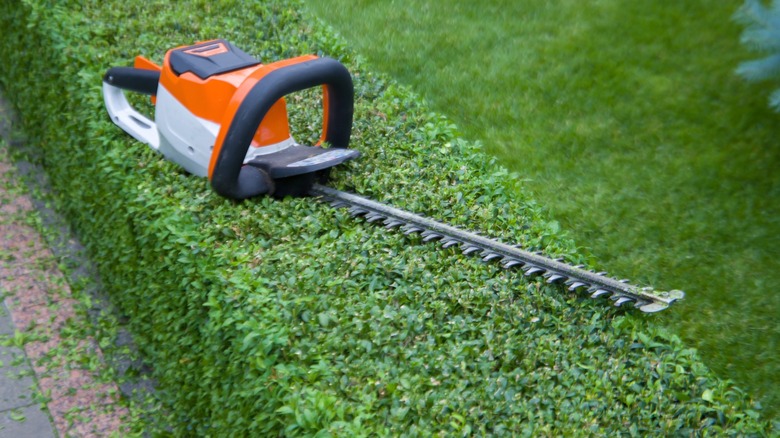What Is The Difference Between A Hedge Cutter And A Hedge Trimmer?
Gardeners love their tools almost as much as their plants. But one question leaves homeowners scratching their heads while standing in the tool aisle. What's the difference between a hedge cutter and a hedge trimmer? Both hedge trimmers and cutters are tools every home landscaper will want. They sound nearly identical. Sometimes they look alike and both promise to tame that wild green wall in your yard. Surely they must be the same thing, right? Not quite.
Hedge trimmers and hedge cutters are different creatures. They're like siblings with opposite personalities. One is neat, precise, and focused on looks. The other's tough, powerful, and built for heavy lifting. A hedge trimmer is designed for shaping and maintaining softer hedges. A hedge cutter is a brute force machine. It is made to slice through thick branches, neglected shrubs, and stubborn growth.
The difference is signaled by their names. Trimming is the lighter work compared to cutting. Hence, hedge trimmers and hedge cutters. Understanding the difference matters. Choosing the wrong tool doesn't just waste your weekend. It can also damage your hedge or break your equipment. A hedge trimmer forced to chew through thick woody branches will struggle. Likewise, a hedge cutter brought out for fine shaping might leave your shrubs looking like a bad haircut.
Precision artists vs. Heavyweight champions of shrub warfare
When it comes to design and build, hedge trimmers usually have lightweight designs. They feature smaller motors and finer blades. This makes them ideal for slicing through softer, greener growth. Think of the fresh shoots on a privet hedge or the tender branches of a boxwood. The blade length varies, but longer blades make it easier to achieve flat, even cuts along big hedge faces. Compared to trimmers, hedge cutters are heavier and stronger. Their blades are larger, with wider tooth gaps. This allows them to chew through branches that a trimmer would choke on. The engines are stronger too, with petrol-powered versions dominating the cutter market.
There are also notable differences when it comes to function and use. The primary use of a hedge trimmer is maintenance. If your hedge is already trimmed regularly, a trimmer is all you need to keep it neat. It's about maintaining an existing shape while preventing overgrowth. It also creates clean lines that make your hedge look sharp rather than scruffy. Hedge cutters are for when your hedge has gone rogue. If it's been left unchecked for months or years, even the best hedge trimmers you can buy won't make a dent. You need a cutter to blast through the thick, woody stems and bring the hedge back into line. After that, you can switch back to a trimmer for the fine-tuning.
Who they're for and how they run
Hedge cutters are often used in commercial or professional landscaping. This is because of their durability and ability to handle jobs that would burn out weaker tools. The extra weight makes them harder to handle for extended periods. But that's the trade-off for their power. Trimmers are easier to hold for extended periods. That's important if you're working on tall hedges or trimming overhead. Their reduced weight also allows for more control. This is why they're the tool of choice for gardeners focused on design, symmetry, and shaping.
Hedge trimmers come in three main power sources. The corded electric, cordless battery, and petrol. Electric and battery models are popular with homeowners because they're light, quiet, and easy to maintain. There are several major cordless hedge trimmer brands. Petrol trimmers are heavier but still used for bigger hedges or professional work. Unlike hedge trimmers, hedge cutters are rarely electric or battery-powered. The work they're designed for requires sustained torque and cutting strength. For this, petrol engines deliver more reliably. That's why most hedge cutters you'll see in professional settings run on petrol.
If your hedge is well-behaved and you just need to keep it looking sharp, a trimmer is your friend. But if your hedge has turned into a wild green monster, only a cutter has the muscle to take it down to size. Smart gardeners often keep both in their shed. That way, no matter how your hedge decides to misbehave, you'll always have the right tool for the job.


